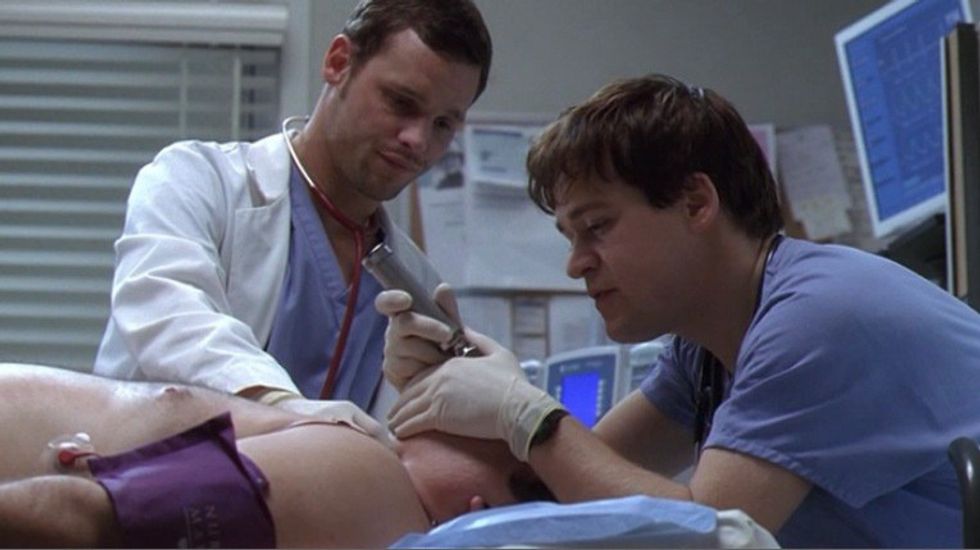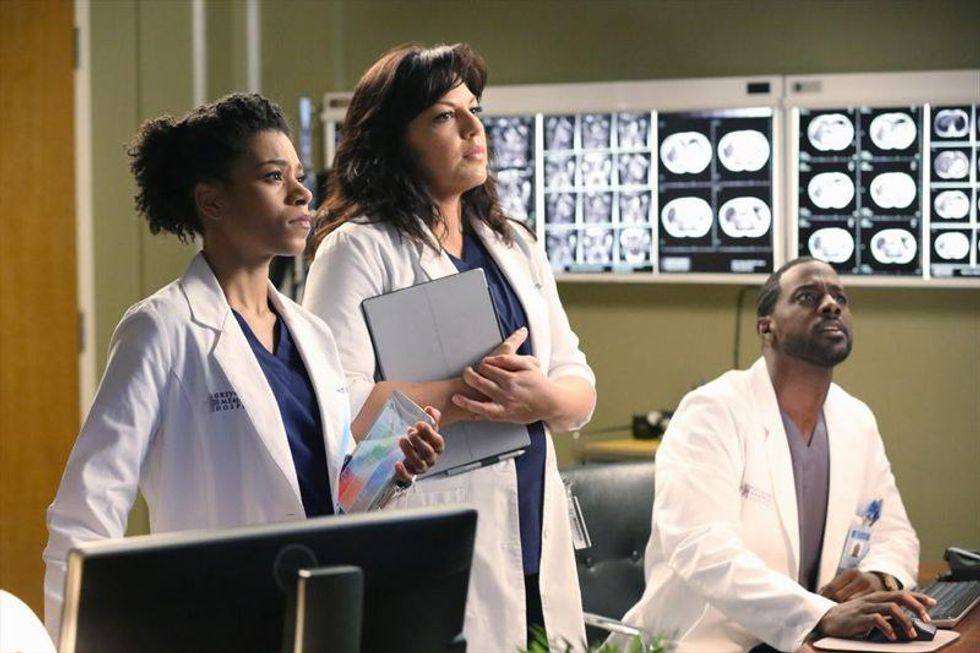As an avid Grey's Anatomy watcher, I've always wondered what the meaning of the words were when the doctors are in surgery or the E.R., and the patient is coding.
So I have here a compiled list of terms that are common in your average episode of Grey's, that might make those situations a little easier to understand.
1. "Push one of epi"
"Epi" actually refers to Epinephrine - which increases and strengthens the heartbeat. It's used to treat a number of conditions: cardiac arrest, anaphylaxis, and superficial bleeding.
2. "S/He's in V-Fib"
Otherwise known as ventricular fibrillation ... it's a rhythm condition where the heart beats with rapid, electrical impulses. This makes the chambers in your heart to quiver instead of pumping blood. The blood pressure then plummets, and the blood supply to your vital organs is cut off. So, in other words, not good.
3. "Intubate him/her."
Often followed by a doctor inserting a tube into a patients mouth, I've discovered the tube is called an "endotracheal tube" and is inserted into the airway and the patient is placed on a ventilator to help them breathe by pushing air into their lungs. The process was first brought to our attention when my favorite character, George O'Malley, failed to do so in front of the prestigious Dr. Burke.
4. A "Whipple"
Often pined after by brand new interns who would kill to see the inside of an O.R., a Whipple is used to treat pancreatic cancer that's confined to the parts of the pancreas. After procedure is over, surgeons reattach the remaining portions of the digestive system so that the body can digest food and expel waste normally. Apparently, it is a difficult and demanding surgery for both patient and surgeon.
5. "Get him/her up to CT"
CT means computed tomography - a painless x-ray test where the computer generates cross-section views of a patient's anatomy; it's used to identify both normal and abnormal structures.
6. "10-blade"
A surgical instrument with a curved cutting edge; it's one of the more traditional blade shapes and is used generally for making small incisions in skin and muscle.
7. "Start a central line"
Starting a central line basically entails entering a long, thin, flexible tube used to give medicines, fluids, nutrients, or blood products over a long period of time. A catheter is inserted in the arm or chest through the skin into a large vein so the said meds can be administered.
So, I hope this brief medical glossary has given you the inspiration to become a surgeon yourself. I know Grey's has definitely played a role in making me consider entering the medical field, and with all twelve seasons watched, I'm sure I'd make a great surgeon already... right?
Or not.






















